The Famous Thursday Post!
Kind of a two part series in conjunction with tomorrow's post, but neither have anything to do with modes or the Circle of Fifths, so ....
Welcome to The Famous Thursday Post!
Our focus on Thursdays is on songwriting, recording, production and commercial release.
Today I want to do a bit of analysis of a song. Our purpose is to see how other songwriters wrote and ended up with a very cool song. We’ll be able to tell at least a little about how the process of writing this song evolved. The song is “Out of My Heart (Into Your Head)” by a somewhat obscure and sorta short-lived, though that’s always a relative concept in the biz, band (“relative” in part because they’ve gotten back together at least once): BBMak, a British group. Link: BBMak Credit: Wikipedia
We know the songwriting was a very quick process from a brief quote by band member and guitarist/singer/songwriter Stephen McNally:
“"We wrote 'Out Of My Heart' in Liverpool with lads, the Griffiths brothers who were in a band called The Real People. It was dead easy writing this song, we did it in an hour. It was one of them things. We sat round with guitars going over melody and lyric ideas and an hour later it was done. It's about the beginning of a relationship when you're falling in love and the feeling you get when it's great".[4]”
Credit: Wikipedia Link: Out Of My Heart (Into Your Head)
And this is a good spot to give a hat tip to our friend Brad Kyle of the Front Row & Backstage Substack. Brad mentioned this band in a post about a lot of things, and only coincidentally (kinda) included this song and band. I usually follow Brad down the rabbit holes he lays in his reader’s paths, and this was no exception. I really liked the song, liked the video, liked the backstory and decided it was worth a dive into. You’ll have to read down a ways in Brad’s post (worth it!) to get to the BBMak breadcrumbs….
So, to set the stage, there are 5 songwriters, 3 that form the band BBMak, and two brothers who are members of a different band (Link: The Real People). From the quote above, we surmise they’re all in a room together with guitars of some sort, probably some pens and paper, or a laptop, or both. From there, we’re totally in conjecture territory, but (and this is drawn heavily from my own experience, they could have done this in some completely different manner, like maybe a whiteboard or something) my guess is:
The idea came from someone, maybe had been floating around within the two groups for awhile and now, just needed to get done. So it was built upon, lyrics were suggested, rejected, perfected, connected, and elected….. or something like that. They were experimenting with some different music, beats and rhythms that were modified as the process went along and as lyrics were being modified as well until the whole thing started to just come together. From there it got easier right up until the last few minutes where they reworked a couple of things. Then it felt like they were 95% or better complete. It needed a couple of run-throughs knowing there would be additional instrumentation and maybe a few adjustments as they moved to the rehearsal and recording process. Aaaaand: Beer-thirty, yeah, baby!!
Maybe, maybe not. It’s not like I was there. But I bet a lot of songwriters would recognize that process, though maybe on a different timeline than an hour. Dunno. Let’s look at what we can know:
The song has two verses, a pre-chorus for the first two choruses, a bridge, and a final, post-bridge chorus that leads to a great instrumental break before the tag and brief outro. The repeated pre-choruses are identical lyrically. The choruses are as well, which probably helped to cut down on writing time. This is a great song, IMHO. Maybe it would be more interesting with some minor lyric changes in the otherwise identical pre-choruses/choruses, but it stands on it’s own without them.
So let’s look a little at structure first: Verse, Pre-chorus, Chorus, Verse, Pre-chorus, Chorus, Bridge, Chorus, Tag (Ed. Note - the Tag is described as an “outro” in the lyrics below from Genius. It sorta is, but it’s probably better to think of the repeated lyrics, usually the hook at the end of the song before it fades or ends as the “ Tag”. In contrast, the “Outro” is better thought of as the instrumental “out” - whatever that is - a fade or ringout chord/resolution, or a drum or cymbal hit, or something, maybe coinciding with the ending vocal lyric, but usually not. FWIW, this is just my opinion, your mileage may vary.) Syllable count and Rhyme schemes: (I only did each structure once - the repeated pre-choruses and choruses are lyrically identical)
Out Of My Heart (Into Your Head) Lyrics
[Verse 1] I feel fine 4 Now the rain has gone and the sun has come to shine 12 Nothing can get me down today 8 Head over heels 4 Got my mind made up as I'm driving through the fields 12 Nothing can get me down again 8 Verse 1 rhyme: AABCCD "A" fine/shine "C" heels/fields today and again don't rhyme [Pre-Chorus] Catch me if you can 5 I've gotta make a getaway 8 Pre-chorus rhyme AB can doesn't rhyme with getaway or way [Chorus] As the sun goes down, waking up my dreams 10 And in my mind you're with me once again 10 Out of my heart, into your head 8 And inside my heart, there's a place for you 10 And in my mind, I'm with you once again 10 Out of my heart, into your head 8 Chorus rhyme ABCDBC Lines 2 and 5 are clever mirrors; "you're with me", "I'm with you" both followed by "once again" which repeats as the rhyme; Lines 3 and 6 are also rhymes by repetition Lines 1, dreams and 4, you don't rhyme [Verse 2] Chasing the sun 4 Trying to get away 6 From the rain that's gonna come 7 Hope I make it all the way 7 I'm lost in a crowd 4? (Is "I'm lost" slurred to a single syllable?) Trying to find my way 6 But the rain keeps falling down 7 Doesn't matter anyway 7 Verse 2 Rhyme ABAB CBCB Lines 2, 4, 6, and 8 are all "B" rhymes - ending in some variation of "way"; "A" lines rhyme - sun/come; "C" lines rhyme - crowd/down [Bridge] Take a look at the sky 6 Feel the sunshine 4 In your heart, in your head 6 In your own time 4 Bridge Rhyme ABCB only "B" lines rhyme - shine/time
Syllable Count Analysis: The first verse builds and ebbs in a math-like progression 4-12-8 and repeats. The pre-choruses build into the chorus, which hold, then drop in syllable count to emphasize the hook (which is the song title) then repeat the build/drop pattern. Verse 2 follows a dramatically different approach than Verse 1, building by line, then repeating that build. The bridge then is distinguished by reversing the Verse 2 pattern, diminishing in count, and then repeating.
I am so impressed with this one-hour-to-write song! It’s possible there were modifications before or during the studio recording, but look closely at the patterns in the syllable counts - and keep in mind this is just the syllable counts, not individual words. That’s what meter is - the pattern of stressed and unstressed sounds. The structures of this song repeat the patterns or break the pattern in order to create interesting variations in the meter. Intentionally counting syllables, not just counting words, let you visualize the meter. The patterns created in the syllables draw the listeners attention, but not particularly on a conscious level. There is usually so much else going on with instrumental melodies, harmonies, percussive rhythm, volume changes, as well as with the vocals themselves, that meter just sort of happens for the listener if the writer has paid attention and created it in the songwriting process. That means paying attention to details like syllable counts, while juggling all the other elements of the song, all the while trying to tell the “story” of the song. In this song, vocal dynamics are extraordinarily effective, the “separate on the verses” vocals, and then “layered on the choruses” vocals of all three members of the band are fabulous and really “sell” the story.
Next, an analysis of the structure of the song, aside from the syllable count, meter, and rhyming patterns: A mixture of conventional structure, with the addition of a pre-chorus for the choruses that occur before the bridge, but not the one after the bridge. The last chorus heads straight into a very cool instrumental break, followed by the tag, and then without screwing around, into….into what? Well, a resolution. Of some sort.
And here’s where we break with analysis for today as we’ve come to a sort of music theory conundrum we’ll talk about tomorrow. What’s up with that resolution? Is it a V-IV-I or a VII-VI-III? That would sorta depend…
Let’s look at the very cool video first…
I think the video adds a lot to this song in a different, not so ordinary way. I love the change from beach theme to studio theme. Kinda bold, but in a good, interesting way. The opening portion of the video with the acoustic (note the capo, I think on 3), is just fabulous. A set of drum hits - kick, snare? I dunno, I’m not a drummer; whatever it is signals the first verse vocals.
(Ed. - And as Brad correctly identifies - (good job, Brad!), the gold top Les Paul!!(probably a more recent model, but just as an FYI if you’re interested, a ‘58 sold on Reverb recently: $145,000 - oh, and a couple C notes for shipping - seriously? - someone will let that just be “shipped”?!?!?!?!)
Anyway…
Note the switch (pretty seamlessly) from the beach to a stage set with the band on a flooded floor (and their guitars, and speakers and mics, with instrument cords hanging into the water) was probably safely done, but still gave me the willies… A Very Cool Song.
And the Chordify chart:
And so - it’s 4/4 common time. It’s 125 BPM, a nice rock tempo. Only 4 chords.
But then, what Key?: Is it BbMajor, or is it Gminor? Huh?
Yeah, Gminor is the relative minor key of BbMajor. Here’s what the 2 keys look like (Major on the left, relative minor on the right):
Note the Gm chord starts us off. And that’s what we’ll talk about tomorrow…
New Space Saving Disclaimer!: This Substack, (not just the first one!) is free, always will be, none of the people or companies or products I link to or write about pay me a damn thing. Neither do you unless you buy my song(s) (See what I did there?). Some stuff may be copyrighted by somebody else…whatever. “Fair Use” doctrine for “educational purposes” (Link: Fair Use) applies, suckers! No stinkin’ AI here unless it’s in something I link to. So.
Michael Acoustic
Today’s musician’s quote:
Neil Diamond: “Because my musical training has been limited, I've never been restricted by what technical musicians might call a song.”
Some “Biz” Links for today:
From Carvin Audio:
From American Songwriter:
From Acoustic Guitar Magazine:
From Disc Makers:
How The YouTube Algorithm Works
Some memes and stuff:
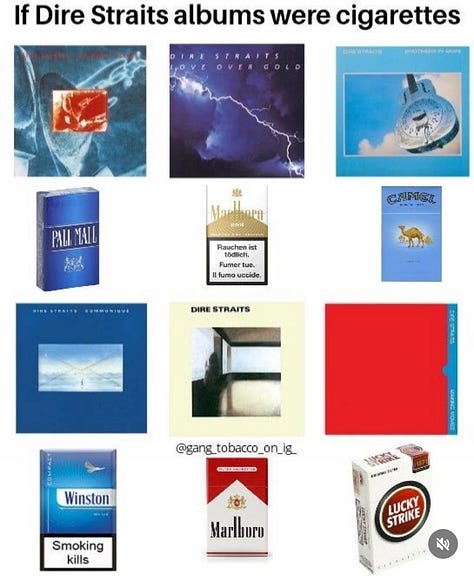
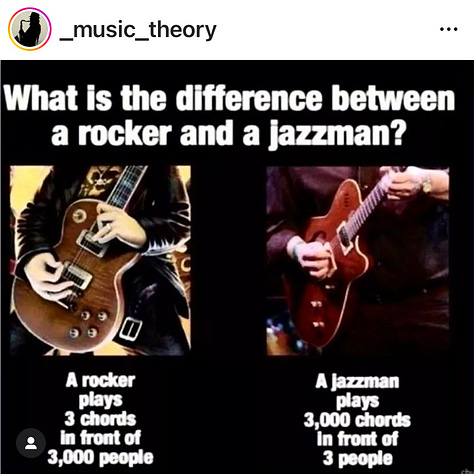
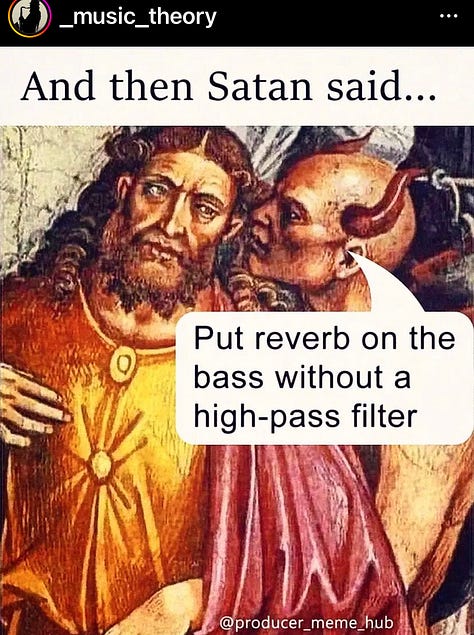
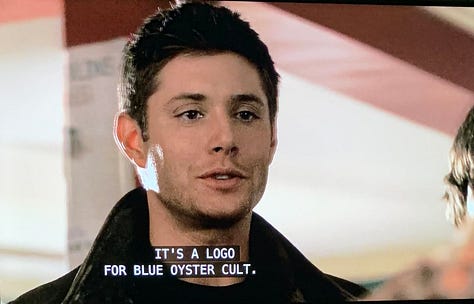

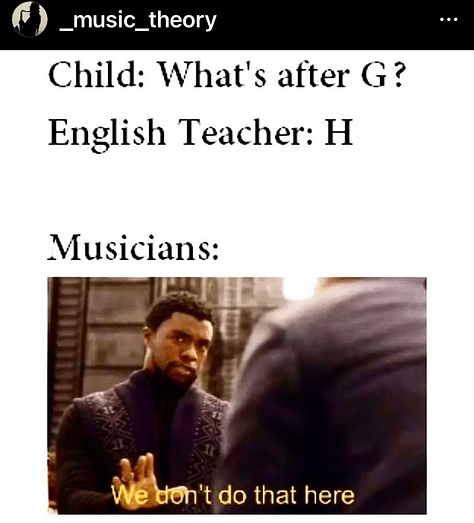
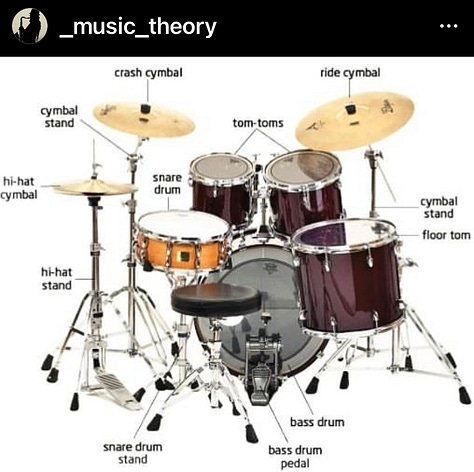
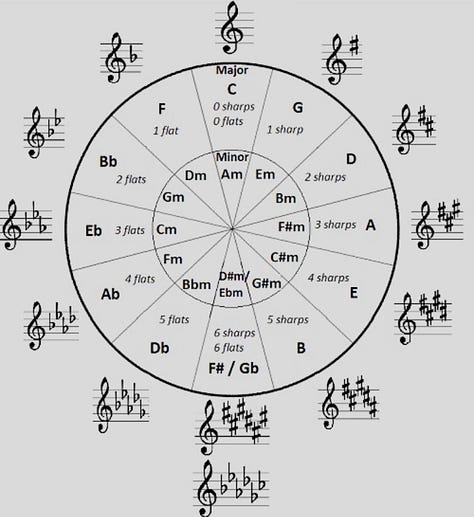
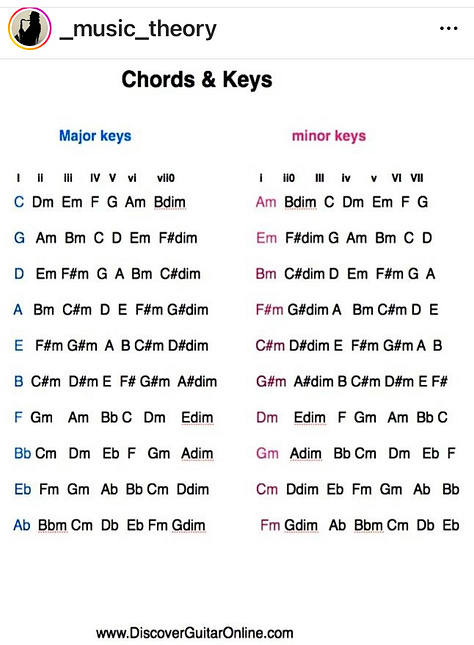
Shameless Self Promotion Section:
My song is out! “Long Road Back” (click on link for streaming options)
Odds and Ends:
There’s been a bit of chatter among Substack writers lately about how “Opens” (when a reader opens a post) and "Read” aren’t the same thing, and that most readers don’t actually read posts all the way through. For the record, read as much or as little as you wish, read what interests you, and if you only read the Friday posts to see Mika, the Cat, we’re all good with that here. But if you did make it all the way through, have a little Easter Egg….
Cheers, and keep playing!
Michael Acoustic
“It’s never really final - you just run out of things you can bear to change…”


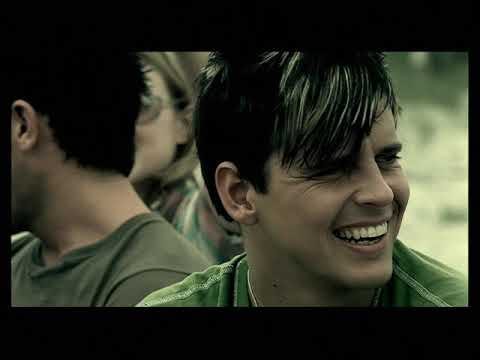



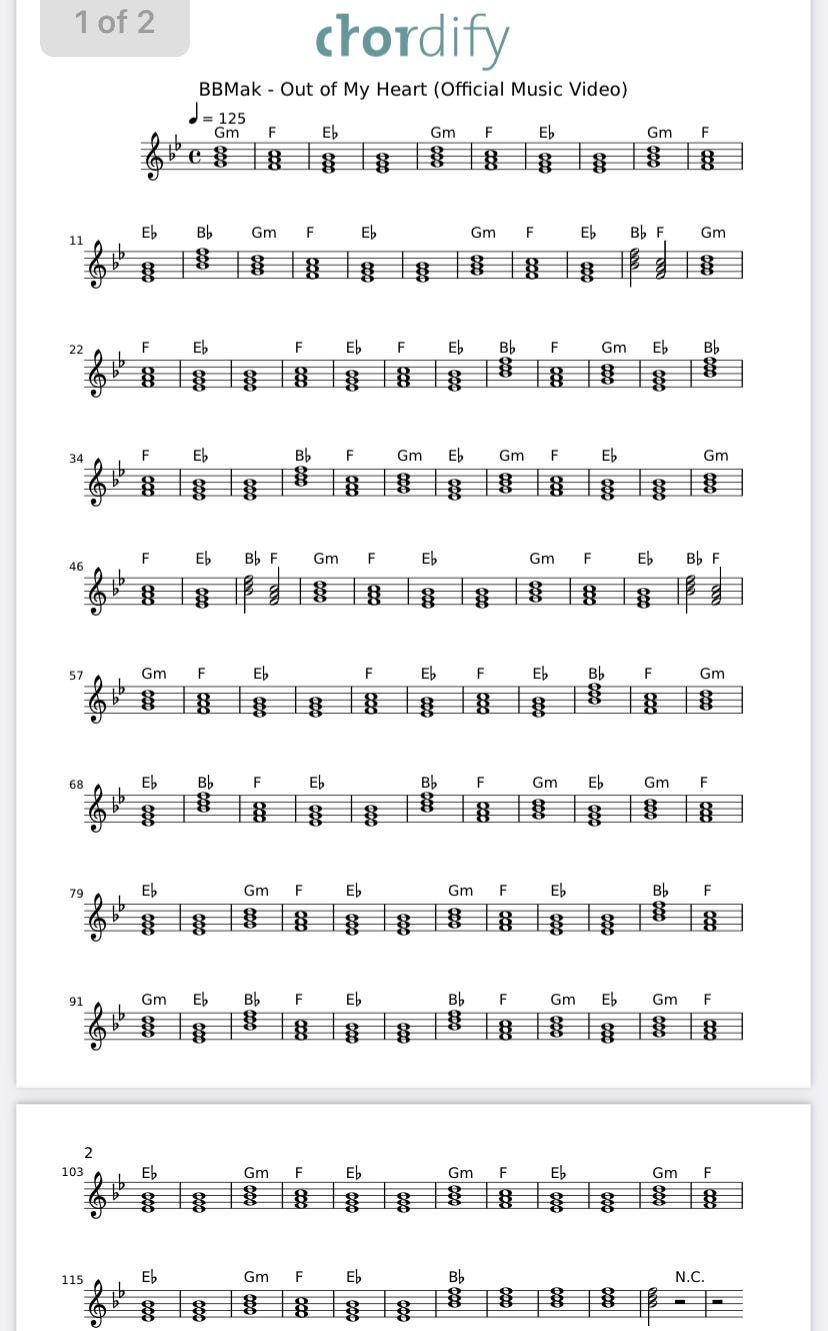

Indeed, what a song! Thanks for the highlight, Michael! It was fun re-visiting it (and with such depth), and re-watching the video, itself a mini-masterpiece of editing! So many cuts that land on a beat, coincide with a cymbal crash, a drum beat or guitar chord. Coming out of the bridge, when that foot-kick splashes water just as they re-enter the chorus? Amaze-balls!
Whatever the song itself does for the emotions (and this one does a lot...I mean, the harmonies alone are impeccable!), the editor can add his/her touch in the vid by creative editing like that! Plus, in BBMak's case (ladies), it helps, too, that they're easy on the eyes! And, they were a landmark gaggle of lads in a "boy band," who cared nothing whatsoever about dancing! N'Sync THAT, Backstreet Boys!
Great stuff, Michael, and I'm happy a song I shone a light on caught your fancy...I hope your readers concur, and dig it, as well! I think they'd also love Taxiride.
Both turn-of-the-century "boy bands with instruments," BBMak and Taxiride (especially their "Everywhere You Go") were a refreshing bridge from the all-dancing, all-singing (but never touching an instrument) boy bands of the '90s to boy bands' eventual extinction, and the refreshing turn toward pop-played-by-musicians-and-not-choreographers era. Woo-hoo!🎶
A very rich piece, Michael. Musical structure parallels that of poetry. It is a creative skill that is extremely difficult to master. I know about poetic structures, meter, tone, diction, prosody, etc. (I taught British Literature). Most people have no earthly idea how difficult it is to write any kind of sonnet ... thus the brilliance of Shakespeare. I can only imagine marrying it to melody. Much respect to your knowledge, Michael, and your ability to share it. -- Jim